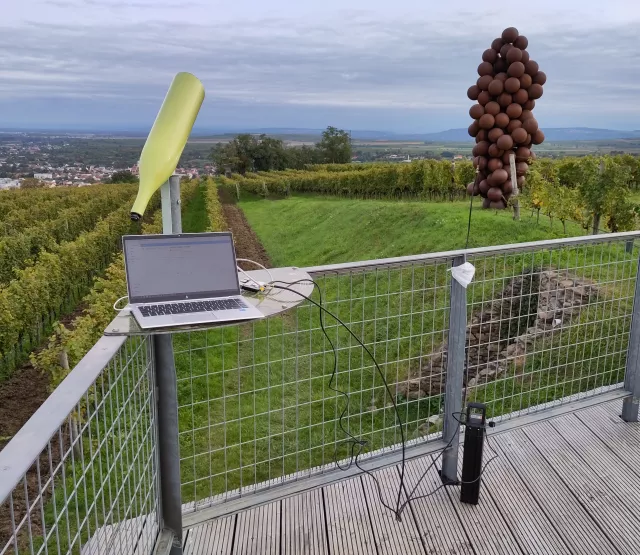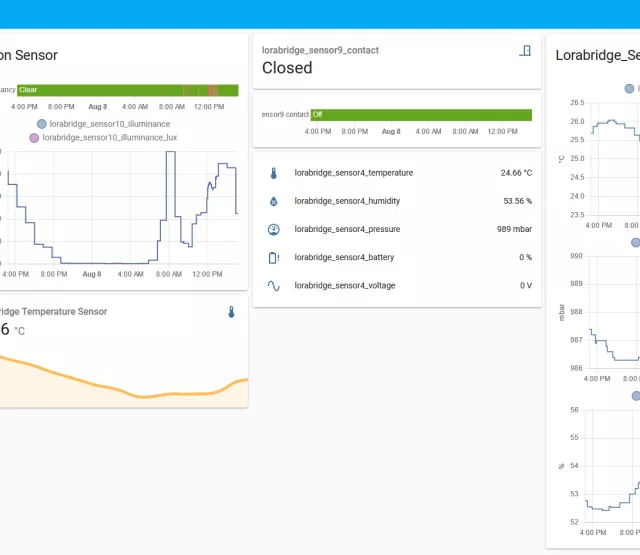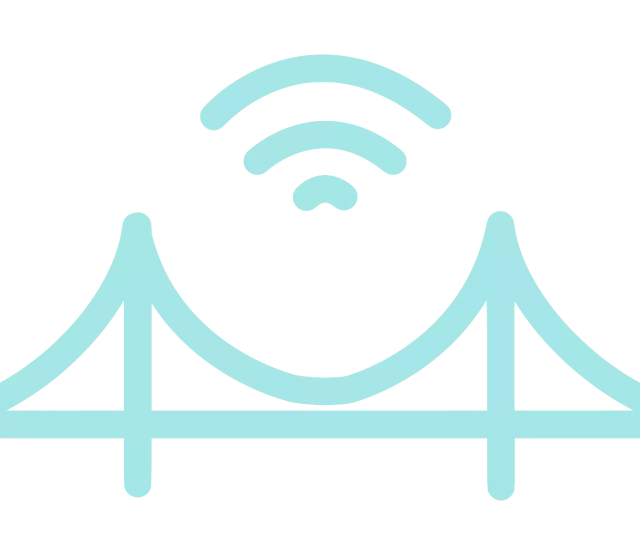
Förderjahr 2021 / Projekt Call #16 / ProjektID: 5788 / Projekt: LoRa Databridge
At the time of writing all the hard work has been finalized on our project LoRaBridge, and so it is the perfect point in time to deliver some throwbacks in development we achieved.
First packet
Our journey started in Q1/2022 with the proposed idea of retransmitting ZigBee data over LoRaWAN. At that time, we went trough several options for the "building blocks", i.e. ZigBee coordinators, sensors, LoRaWAN modems and 3rd party software. After carefully evaluating each option for e.g. availability/support we arrived at the configuration illustrated now in the LoRaBridge documentation, which balances costs and component quality/availability. The next step involved "gluing" the building blocks together by setting up interfaces, organizing functional blocks in docker containers etc. The first highlight of the project was achieved soon afterwards: We can vividly remember the moment the first Zigbee sensor value arrived successfully to the LoRaWAN gateway after several hours spent configuring and debugging.
The prototype
Inspired by the first success, we progressed further to improve the early version of the bridge. We soon recognized that transmission of MQTT data required compression algorithms to be carried over a low-data rate LoRaWAN link, which we implemented at next. Also the first fully functioning prototype dating around May-June of 2022 increased the support for various ZigBee sensor devices, which are according to Zigbee2MQTT in several hundreds. At the same time period we started to continously collect logs of the LoRaBridge components, which were later analyzed.
To the wine fields and beyond
After some dedicated testing of LoRaBridge range extension in in-door settings, we decided to expand the scope of our original use-case (home automation) to an wine field out-door use-case. This is a well fitting scenario as LoRaWAN is known for its beyond kilometers reach in outdoor wireless conditions. So we arranged weather proof casings and battery packs and headed to Langenlois for field measurements. According to our tests, we achieved a range extension of up to 1.5 km for a cheap temperature sensor. Hence, we were able to show that the LoRaBridge hardware might be a viable option to re-use existing wireless sensors to build out-door remote sensing applications, like frost sensing, and at the same time spare device aquisition costs!
We really enjoyed developing LoRaBridge and we are also proud on what we achieved! That said, we are looking forward to continue the development of LoRaBridge within follow-up project(s).




